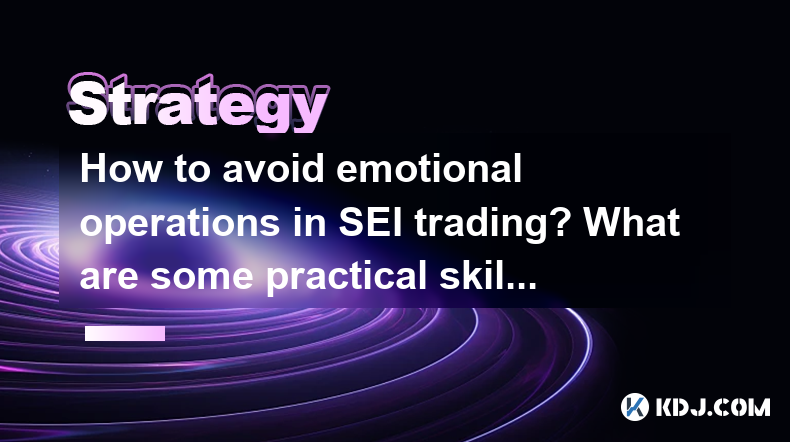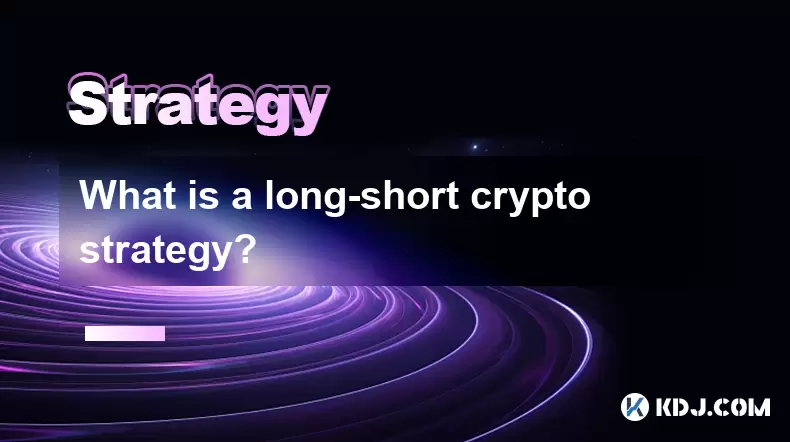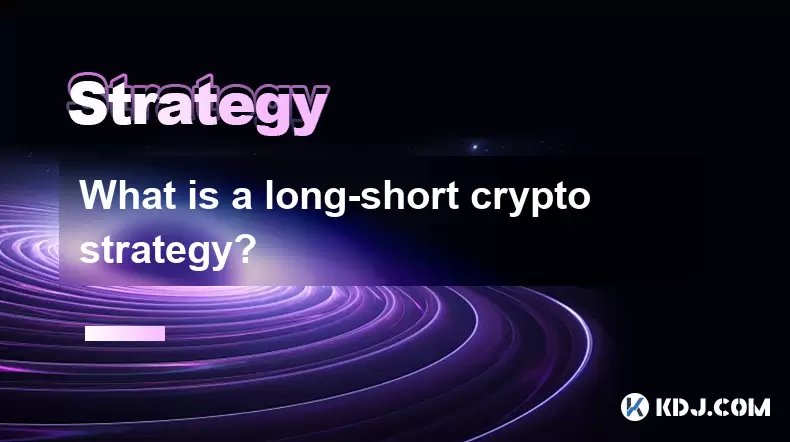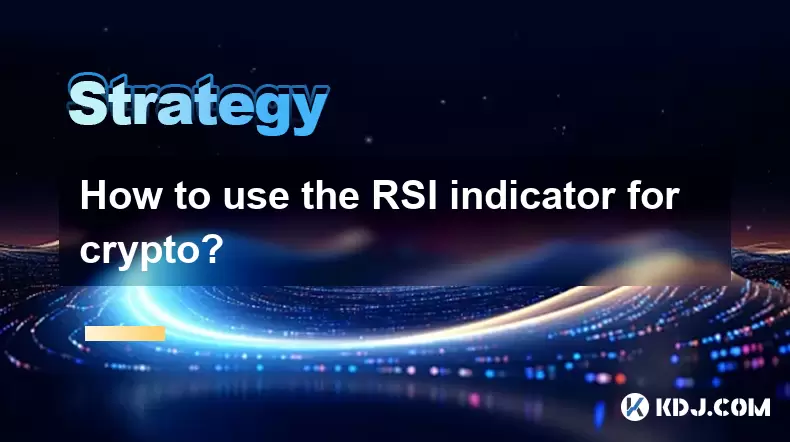-
 Bitcoin
Bitcoin $116900
-1.92% -
 Ethereum
Ethereum $3655
-2.43% -
 XRP
XRP $3.093
-4.38% -
 Tether USDt
Tether USDt $1.000
-0.01% -
 BNB
BNB $776.8
-0.50% -
 Solana
Solana $182.5
-3.18% -
 USDC
USDC $1.000
0.01% -
 Dogecoin
Dogecoin $0.2287
-4.43% -
 TRON
TRON $0.3155
0.17% -
 Cardano
Cardano $0.7984
-2.54% -
 Hyperliquid
Hyperliquid $43.05
0.67% -
 Sui
Sui $3.849
0.16% -
 Stellar
Stellar $0.4215
-2.84% -
 Chainlink
Chainlink $17.83
-3.09% -
 Hedera
Hedera $0.2553
4.41% -
 Bitcoin Cash
Bitcoin Cash $540.3
4.62% -
 Avalanche
Avalanche $23.51
-2.54% -
 Litecoin
Litecoin $111.8
-1.52% -
 UNUS SED LEO
UNUS SED LEO $8.984
0.11% -
 Shiba Inu
Shiba Inu $0.00001370
-1.24% -
 Toncoin
Toncoin $3.145
-0.85% -
 Ethena USDe
Ethena USDe $1.001
-0.04% -
 Polkadot
Polkadot $4.014
-1.63% -
 Uniswap
Uniswap $10.17
-2.84% -
 Monero
Monero $323.8
0.43% -
 Dai
Dai $1.000
0.01% -
 Bitget Token
Bitget Token $4.509
-2.87% -
 Pepe
Pepe $0.00001220
-4.37% -
 Aave
Aave $290.9
-0.67% -
 Cronos
Cronos $0.1286
0.99%
SEI 거래에서 정서적 작전을 피하는 방법은 무엇입니까? 실용적인 기술은 무엇입니까?
두려움과 탐욕과 같은 감정은 충동적인 SEI 거래 결정을 주도하여 손실을 초래할 수 있습니다. 탄탄한 거래 계획과 마음 챙김은 이러한 감정을 효과적으로 관리하는 데 도움이됩니다.
2025/04/30 12:28

SEI 거래의 정서적 작전 소개
SEI 거래의 맥락에서 정서적 작업은 논리와 분석보다는 감정에 의해 주도 된 결정을 나타냅니다. 이들은 충동 구매 또는 판매로 이어질 수 있으며 종종 재정적 손실을 초래합니다. 이러한 감정을 관리하는 방법을 이해하는 것은 휘발성 암호 화폐 세계에서 성공하려는 모든 상인에게는 중요합니다. 이 기사는 정서적 작전을 피하고보다 정보에 근거한 거래 결정을 내리는 데 도움이되는 실용적인 기술과 전략을 탐구합니다.
감정이 거래에 미치는 영향을 이해합니다
두려움, 탐욕 및 흥분과 같은 감정은 거래 결정에 큰 영향을 줄 수 있습니다. 두려움으로 인해 시장이 급증하는 동안 SEI 토큰을 조기에 판매하게 할 수 있지만, 탐욕은 비현실적인 가격 급증을 기대하면서 너무 오랫동안 그들을 붙잡을 수 있습니다. 흥분은 당신이 잃을 여유가있는 것보다 더 많은 투자를하도록 자극 할 수 있습니다. 이러한 정서적 유발체를 인식하는 것은 거래 전략에 미치는 영향을 완화하기위한 첫 번째 단계입니다.
거래 계획 개발
정서적 운영을 피하려면 잘 정의 된 거래 계획이 필수적입니다. 이 계획은 투자 목표, 위험 허용 오차, 입국 및 출구 포인트 및 위험을 감수하고자하는 자본의 양을 간략하게 설명해야합니다. 미리 정해진 계획을 고수함으로써 단기 시장 변동에 따라 충동적인 결정을 내릴 가능성을 줄일 수 있습니다.
- 투자 목표 정의 : 장기 성장 또는 단기 이익에 관계없이 SEI 거래로 달성하려는 목표를 명확하게 설명하십시오.
- 위험 내성을 평가하십시오 . 편안한 위험의 양을 결정하고 그에 따라 스톱 손실 주문을 설정하십시오.
- 입장 및 종료 포인트 설정 : SEI 토큰을 사고 판매 할 가격 지점을 결정하십시오.
- 현명하게 자본을 할당하십시오 : 잃을 여유가있는 것을 투자하고, 포트폴리오를 다양 화하여 위험을 확산시킵니다.
기술 분석 활용
기술 분석 에는 미래의 가격 변동을 예측하기 위해 과거 시장 데이터 (주로 가격 및 양)를 연구하는 것이 포함됩니다. 차트와 지표에 중점을두면보다 객관적인 결정을 내리고 시장 변화에 대한 감정적 반응을 피할 수 있습니다. SEI 거래를위한 몇 가지 주요 기술 분석 도구는 다음과 같습니다.
- 이동 평균 : 이들은 시간이 지남에 따라 추세를 식별하기 위해 가격 데이터를 부드럽게하는 데 도움이됩니다.
- 상대 강도 지수 (RSI) :이 모멘텀 오실레이터는 가격 변동의 속도와 변화를 측정하여 과매 또는 과산 조건을 식별 할 수 있도록 도와줍니다.
- BOLLINGER BANDS :이 밴드는 높은 가격과 저렴한 가격에 대한 상대적 정의를 제공하여 변동성과 잠재적 인 가격 탈주를 측정하는 데 도움이됩니다.
이러한 지표를 정기적으로 분석함으로써 거래에 대한보다 훈련 된 접근 방식을 개발하고 감정의 영향을 줄일 수 있습니다.
위험 관리 전략 구현
위험 관리는 자본을 보호하고 상실에 대한 두려움으로 인해 감정적 결정을 피하는 데 중요합니다. 효과적인 위험 관리 전략에는 다음이 포함됩니다.
- 스톱 손실 주문 설정 : SEI 토큰이 특정 가격에 도달 할 때 자동으로 판매하여 잠재적 손실을 제한합니다.
- 위치 사이징 사용 : 전체 포트폴리오 및 위험 허용 범위를 기반으로 위치 규모를 결정하여 단일 거래가 자본에 크게 영향을 미치지 않도록합니다.
- 포트폴리오 다각화 : 단일 투자와 관련된 위험을 줄이기 위해 다른 자산에 투자를 확산시킵니다.
이러한 전략을 구현함으로써 거래에 대한보다 균형 잡힌 접근 방식을 유지하고 시장 변동성의 정서적 영향을 최소화 할 수 있습니다.
마음 챙김과 정서적 인식을 실천합니다
마음 챙김 과 정서적 인식은 거래에서 감정을 관리하기위한 강력한 도구입니다. 현재 상태를 유지하고 자신의 감정을 인식함으로써 시장 변화에 대한 반응을 더 잘 통제 할 수 있습니다. 마음 챙김을 향상시키는 몇 가지 기술에는 다음이 포함됩니다.
- 명상 : 정기적 인 명상은 더 차분한 사고 방식을 개발하여 정서적 거래의 가능성을 줄일 수 있습니다.
- 저널링 : 거래 저널을 유지하면 정서적 반응에서 결정을 반영하고 패턴을 식별 할 수 있습니다.
- 호흡 운동 : 간단한 호흡 기술은 스트레스가 많은 거래 상황에서 침착하고 집중하는 데 도움이 될 수 있습니다.
이러한 관행을 일상 생활에 통합함으로써 감정적 탄력성을 향상시키고보다 합리적인 거래 결정을 내릴 수 있습니다.
지원과 교육 추구
무역 커뮤니티의 교육 및 지원은 정서적 작전을 피하는 데 도움이 될 수 있습니다. 다른 거래자들과 교류하고, 웹 세미나에 참석하고, 거래 심리학에 관한 책을 읽으면 감정을 관리하기위한 귀중한 통찰력과 전략을 제공 할 수 있습니다. 고려해야 할 일부 리소스에는 다음이 포함됩니다.
- 거래 커뮤니티 : SEI 거래 전용 온라인 포럼 또는 소셜 미디어 그룹에 가입하여 경험을 공유하고 다른 사람들로부터 배우십시오.
- 웹 세미나 및 과정 : 심리학 및 정서적 관리에 중점을 둔 과정에 등록합니다.
- 책 : Mark Douglas의 'Trading in the the the the the the the the the the thrading'또는 Brett N. Steenbarger의 'The Psychology'와 같은 책을 읽고 거래의 정서적 측면에 대한 더 깊은 이해를 얻습니다.
지속적으로 자신을 교육하고 지원을 구하면보다 효과적으로 거래하고 감정적 인 함정을 피하는 데 필요한 기술을 개발할 수 있습니다.
자주 묻는 질문
Q : 거래 결정이 감정에 의해 주도되는지 어떻게 알 수 있습니까?
A : 당신의 거래 결정은 감정에 의해 주도된다는 신호에는 충동적인 거래, 시장 운동에 대해 불안하거나 스트레스를 받고, 거래 계획에서 벗어나는 것이 포함됩니다. 거래 저널을 정기적으로 검토하면 이러한 패턴을 식별하는 데 도움이 될 수 있습니다.
Q : 정서적 거래가 유익 할 수 있습니까?
A : 정서적 거래는 때때로 빠른 이익을 얻을 수 있지만 일반적으로 위험하고 지속 불가능합니다. 정서적 결정은 종종 철저한 분석에 근거하지 않으므로 시간이 지남에 따라 손실 가능성을 높입니다.
Q : 거래에서 정서적 징계를 개발하는 데 얼마나 걸립니까?
A : 거래에서 정서적 징계를 개발하는 것은 몇 달 또는 몇 년이 걸릴 수있는 지속적인 과정입니다. 일관된 관행, 자기 인식 및 거래 계획을 따르는 약속이 필요합니다.
Q : 거래에서 감정을 관리하는 데 도움이되는 도구 나 앱이 있습니까?
A : 그렇습니다. 여러 도구와 앱이 거래에서 감정을 관리하는 데 도움이 될 수 있습니다. 예를 들어, Tradersync 또는 Edgewonk와 같은 거래 저널을 사용하면 감정과 결정을 추적 할 수 있으며 Headspace 또는 Calm과 같은 마음 챙김 앱은 침착하고 집중하는 데 도움이 될 수 있습니다.
부인 성명:info@kdj.com
제공된 정보는 거래 조언이 아닙니다. kdj.com은 이 기사에 제공된 정보를 기반으로 이루어진 투자에 대해 어떠한 책임도 지지 않습니다. 암호화폐는 변동성이 매우 높으므로 철저한 조사 후 신중하게 투자하는 것이 좋습니다!
본 웹사이트에 사용된 내용이 귀하의 저작권을 침해한다고 판단되는 경우, 즉시 당사(info@kdj.com)로 연락주시면 즉시 삭제하도록 하겠습니다.
- UAE의 디지털 자산 혁명 : Stablecoin 규정이 중심에 있습니다
- 2025-07-26 10:40:11
- Virtual Weekly Drop : 복구 분석 및 개인 정보 푸시
- 2025-07-26 08:50:11
- Bitcoin, Cynthia Lummis 및 Freedom Money : New Yorker 's Take
- 2025-07-26 08:30:11
- Pudgy Penguins, Crypto Price 및 Altseason Buzz : 과대 광고는 무엇입니까?
- 2025-07-26 10:51:48
- Crypto Gainers, Top 10, 30 주 : Altcoins Buck the Trend
- 2025-07-26 08:55:12
- Solana, Altcoins 및 Coinbase : Buzz는 무엇입니까?
- 2025-07-26 06:30:12
관련 지식

일반적인 암호화 투자 실수를 피하는 방법은 무엇입니까?
2025-07-13 01:35:44
암호 투자의 위험 이해 cryptocurrency에 대한 투자는 매우 보람이있을 수 있지만 상당한 위험이 있습니다. 투자자가 저지르는 가장 일반적인 실수 중 하나는 암호 화폐의 기술과 시장 역학을 완전히 이해하지 못하는 것 입니다. 주식 또는 채권과 같은 기존 자산과 ...

오랜 기본 암호화 전략이란 무엇입니까?
2025-07-15 10:56:42
오랜 기본 암호화 전략의 기본 사항을 이해합니다 오랫동안 쇼트 암호화 전략은 트레이더가 동시에 다른 암호 화폐에서 길고 짧은 위치를 취하여 시장 비 효율성을 활용하는 투자 접근법입니다. 이 방법을 통해 투자자는 가격 상승 및 하락으로 이익을 얻을 수 있으므로 암호 화폐...

오랜 기본 암호화 전략이란 무엇입니까?
2025-07-11 13:28:38
장기적인 암호화 전략의 기본 사항 이해 오랜 기본 암호화 전략 은 상인이 암호 화폐 시장에서 길고 짧은 위치를 모두 가격 이동으로 이익을 얻는 투자 접근법입니다. 이 전략에서, 상인은 가치가 증가 할 것으로 예상되는 자산을 구매하는 동안 (단락) 자산을 동시에 판매 할...

암호화에 RSI 표시기를 사용하는 방법은 무엇입니까?
2025-07-12 15:56:45
<h3>Understanding the RSI Indicator in Cryptocurrency Trading</h3><p>The Relative Strength Index (RSI) is a momentum oscillator used...

COPY 거래는 암호화 초보자를위한 좋은 전략입니까?
2025-07-12 08:28:30
cryptocurrency 시장에서 사본 거래 이해 카피 거래는 초보자 거래자가 숙련 된 투자자의 거래를 자동으로 복제하는 전략입니다. cryptocurrencies 와 관련 하여이 방법을 사용하면 초보자가 그러한 서비스를 제공하는 플랫폼을 통해 노련한 거래자의 행동을...

$ 1000의 암호화 포트폴리오를 구축하는 방법은 무엇입니까?
2025-07-13 20:14:27
cryptocurrency 투자의 기본 이해 $ 1000의 암호화 포트폴리오를 구축하는 것은 암호 화폐 투자의 기초를 이해하는 것으로 시작됩니다. cryptocurrencies는 보안을 위해 암호화를 사용하고 블록 체인 기술을 기반으로 분산 된 네트워크에서 작동하는 디...

일반적인 암호화 투자 실수를 피하는 방법은 무엇입니까?
2025-07-13 01:35:44
암호 투자의 위험 이해 cryptocurrency에 대한 투자는 매우 보람이있을 수 있지만 상당한 위험이 있습니다. 투자자가 저지르는 가장 일반적인 실수 중 하나는 암호 화폐의 기술과 시장 역학을 완전히 이해하지 못하는 것 입니다. 주식 또는 채권과 같은 기존 자산과 ...

오랜 기본 암호화 전략이란 무엇입니까?
2025-07-15 10:56:42
오랜 기본 암호화 전략의 기본 사항을 이해합니다 오랫동안 쇼트 암호화 전략은 트레이더가 동시에 다른 암호 화폐에서 길고 짧은 위치를 취하여 시장 비 효율성을 활용하는 투자 접근법입니다. 이 방법을 통해 투자자는 가격 상승 및 하락으로 이익을 얻을 수 있으므로 암호 화폐...

오랜 기본 암호화 전략이란 무엇입니까?
2025-07-11 13:28:38
장기적인 암호화 전략의 기본 사항 이해 오랜 기본 암호화 전략 은 상인이 암호 화폐 시장에서 길고 짧은 위치를 모두 가격 이동으로 이익을 얻는 투자 접근법입니다. 이 전략에서, 상인은 가치가 증가 할 것으로 예상되는 자산을 구매하는 동안 (단락) 자산을 동시에 판매 할...

암호화에 RSI 표시기를 사용하는 방법은 무엇입니까?
2025-07-12 15:56:45
<h3>Understanding the RSI Indicator in Cryptocurrency Trading</h3><p>The Relative Strength Index (RSI) is a momentum oscillator used...

COPY 거래는 암호화 초보자를위한 좋은 전략입니까?
2025-07-12 08:28:30
cryptocurrency 시장에서 사본 거래 이해 카피 거래는 초보자 거래자가 숙련 된 투자자의 거래를 자동으로 복제하는 전략입니다. cryptocurrencies 와 관련 하여이 방법을 사용하면 초보자가 그러한 서비스를 제공하는 플랫폼을 통해 노련한 거래자의 행동을...

$ 1000의 암호화 포트폴리오를 구축하는 방법은 무엇입니까?
2025-07-13 20:14:27
cryptocurrency 투자의 기본 이해 $ 1000의 암호화 포트폴리오를 구축하는 것은 암호 화폐 투자의 기초를 이해하는 것으로 시작됩니다. cryptocurrencies는 보안을 위해 암호화를 사용하고 블록 체인 기술을 기반으로 분산 된 네트워크에서 작동하는 디...
모든 기사 보기

























































































